Sometimes one has to leave the familiar realm and instead head to new places in order to broaden one’s horizon. A potential destination to do this is Niigata prefecture, located southwest of Miyagi prefecture, where Sendai Motions is based. Niigata is known most widely for its rice production – its output is second only to Hokkaido. But there are also other places worth spending a visit.
The Takada train station lies in central Joetsu. When visitors get off the train and walk south along the tracks, they will soon reach a temple surrounded by slim stone monuments carrying names of those who have supported the temple with a donation. Some of them represent banks, some of them represent companies and others represent individuals. One of the monuments reads “Ukiyo”.
Continuing along the tracks, a two story building hidden behind a simple fence and trees in the colors of autumn comes into view. On the sign standing next to the building, the same name found at the temple is written in curvy Japanese characters, accompanied by the title “Ryotei”. This is our destination for today.
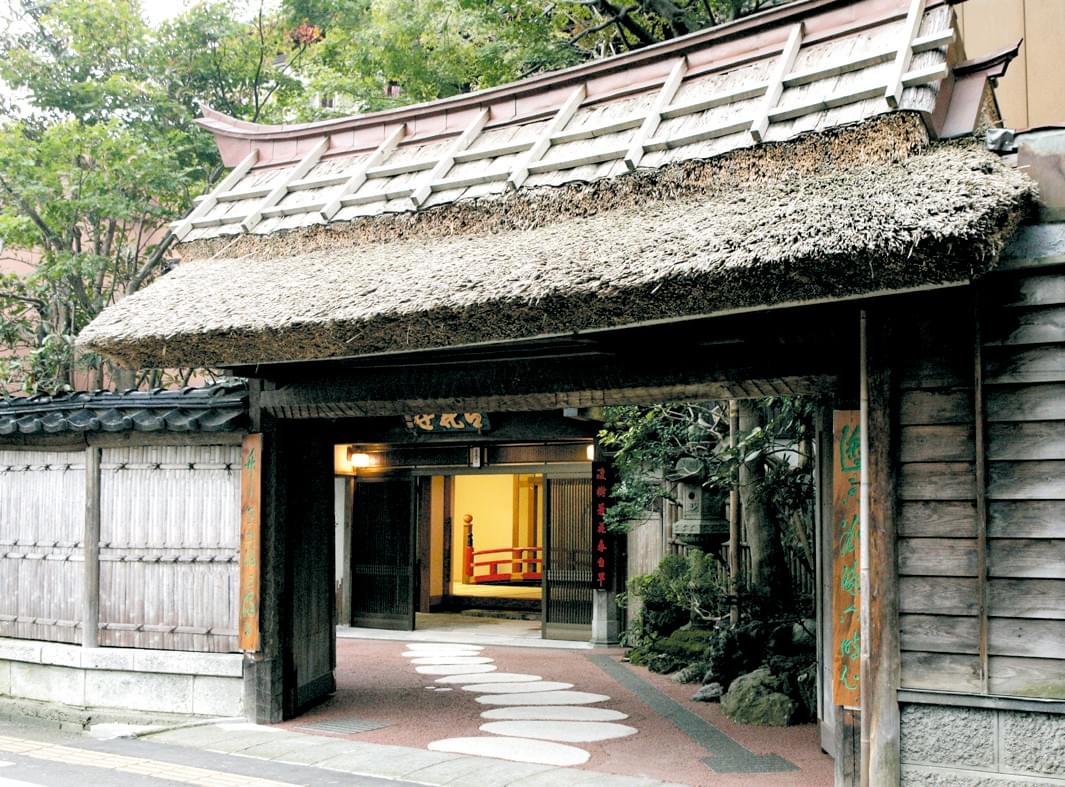
A “Ryotei” is a traditional Japanese restaurant, few of which have survived until the present day. There are many rules to follow for a ryotei, in terms of design as well as the dishes it provides. “Ukiyo” has managed to be recognized as a cultural asset, supporting their shining conviction.
From the outside, the building looks like a wildly jumbled together contraption – wavy roofs are fused together with more present, geometric architecture. The entire building seems to have jumped out of an animated movie made by Hayao Miyazaki. On the inside, however, guests will find an elegant and consistent ryotei to explore.
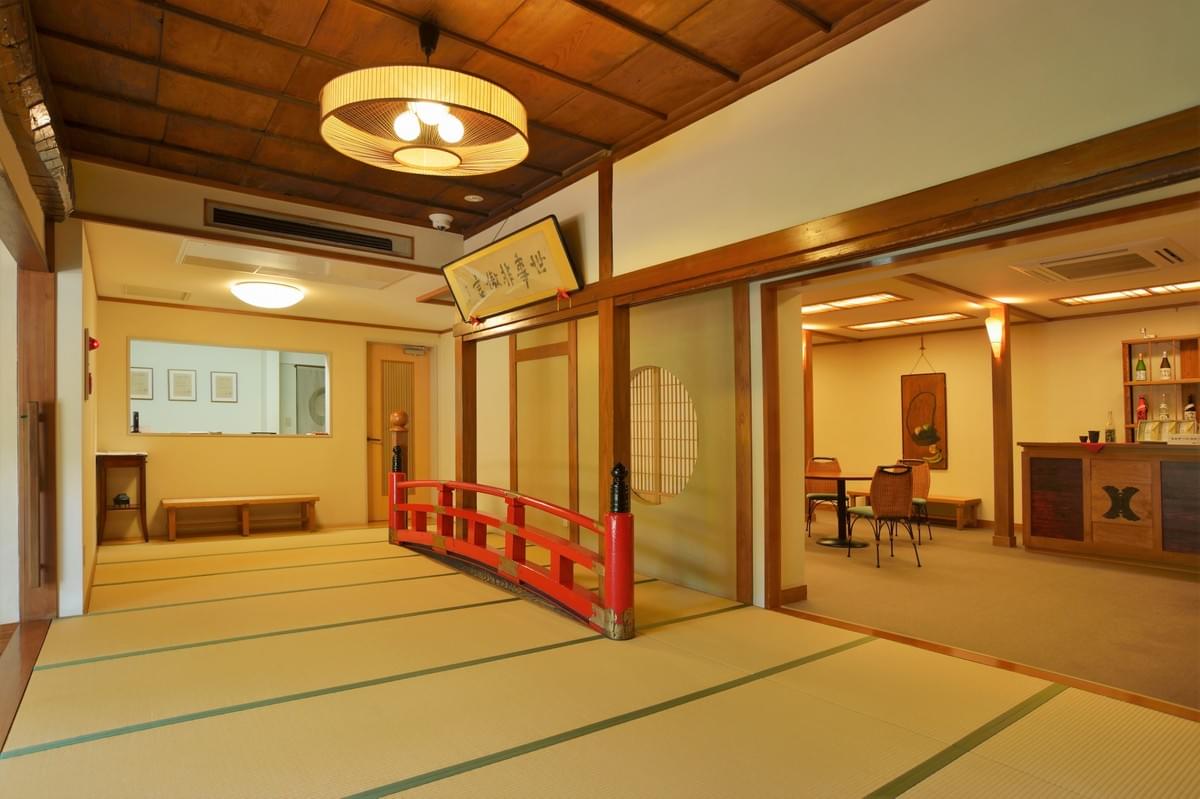
Ukiyo holds a high pedigree. Even the crown prince of Japan has snuck into this hideout dressed as a commoner. He was accompanied by his wife who disguised herself as a Geisha. Pictures of the visit decorate the entrance hall, giving a glimpse of the golden times of the ryotei culture. Back then, Ukiyo had a much larger staff, the spirit of which is now carried on by the remaining ladies, flying up and down stairs and into rooms in pink kimonos decorated with intricate patterns and designs. They carry drinks and dishes that look almost too good to eat. Their hospitality is the key to their continued popularity – many guests are repeaters.
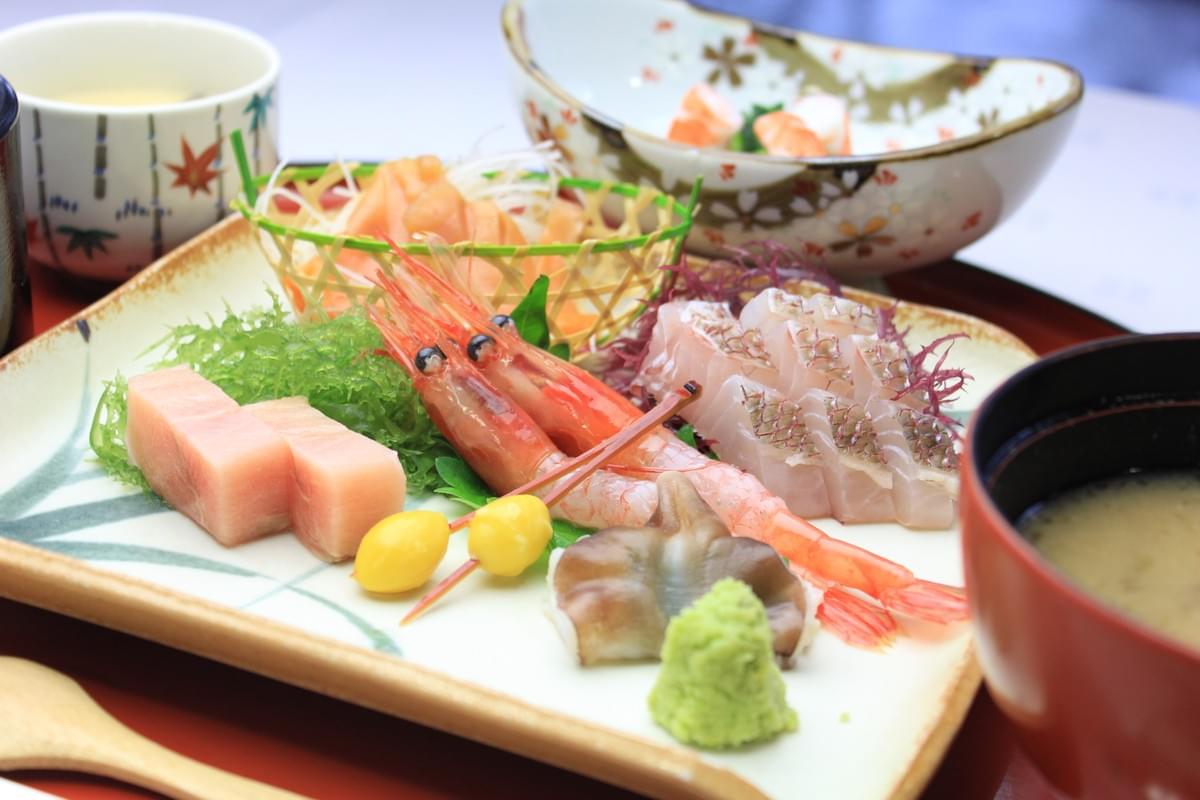
It is unusual for the dining rooms in a ryotei to still be in use. Whereas most similar places have turned into de facto museums which give you only a small taste of how it used to be, Ukiyo offers the entire menu.
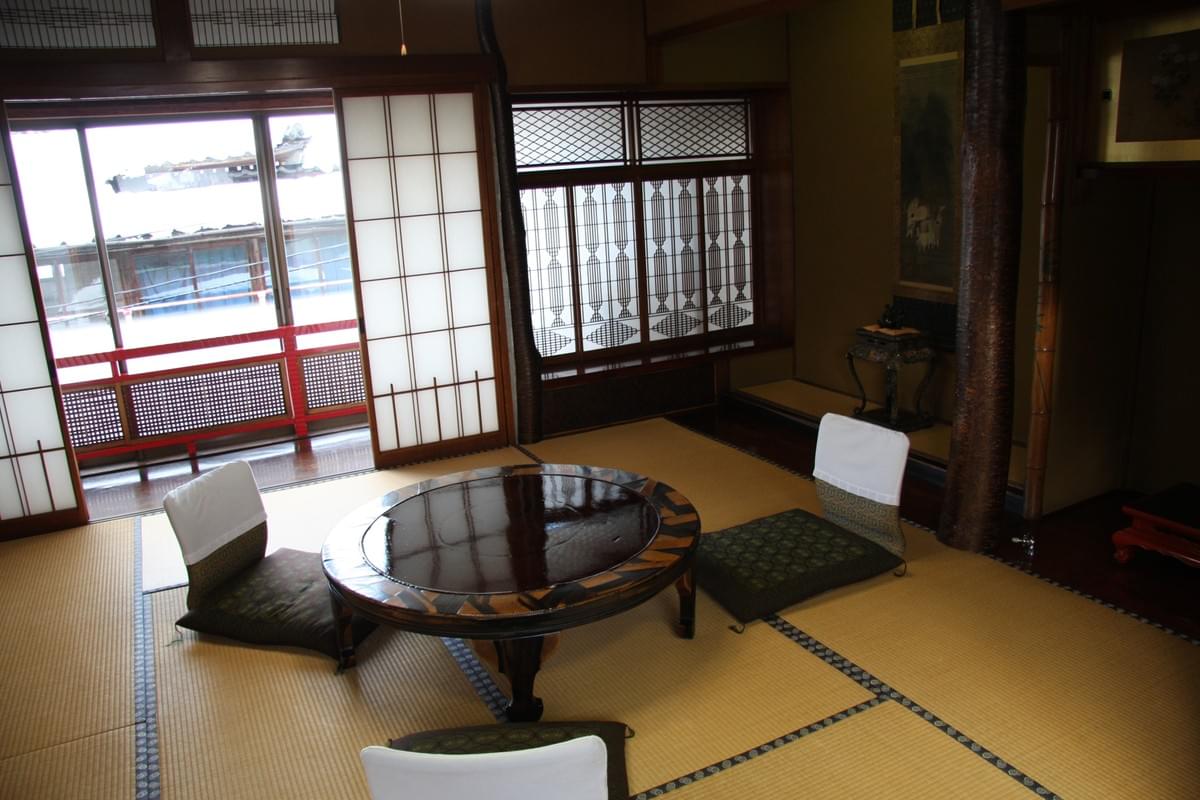
On this day, excited voices, laughter and applause can be heard from the second floor, joined by old Japanese songs that come within earshot when climbing the stairs. The euphoric combination of sounds is originating from the large banquet hall on the left, at that moment hidden completely behind sliding doors. Jackets and Japanese clothing hung up on a rack between staircase and banquet hall give an idea of how many visitors are currently living the ryotei experience.
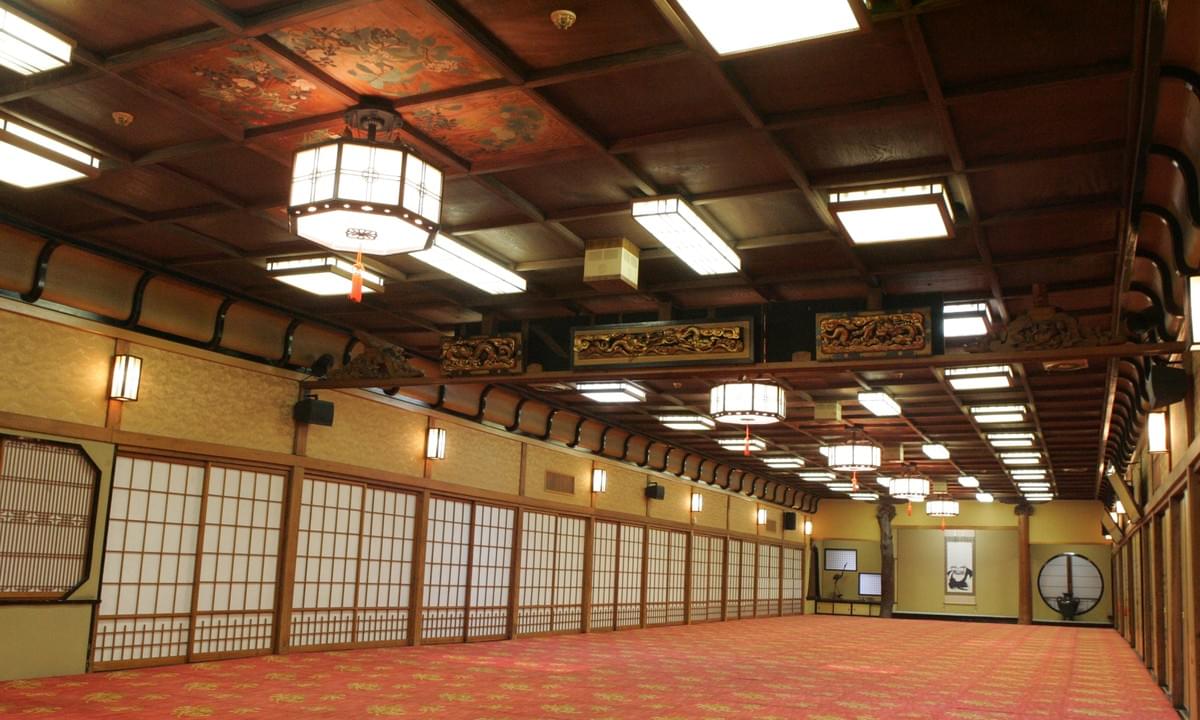
Leaving the banquet hall behind, a small, weakly-lit room reveals itself in a corner vis-à-vis of the stairs. Its view from the entrance through large windows on the opposite end of the room reaches straight out into the garden, with leaves scattered all over, on bushes, a wooden bridge and the small pond home to a swarm of koi fish. A garden like this, clearly showing the changes of season for guests to enjoy, is another mandatory element necessary to be considered a cultural asset. Ukiyo does not pull any punches in this regard. The garden can also be seen from the dining hall on the first floor. In the evening, large lamps bathe the trees before them in a warm light. During our stay, the tree crowns still shone in a strong green. They would not give in to autumn just yet.
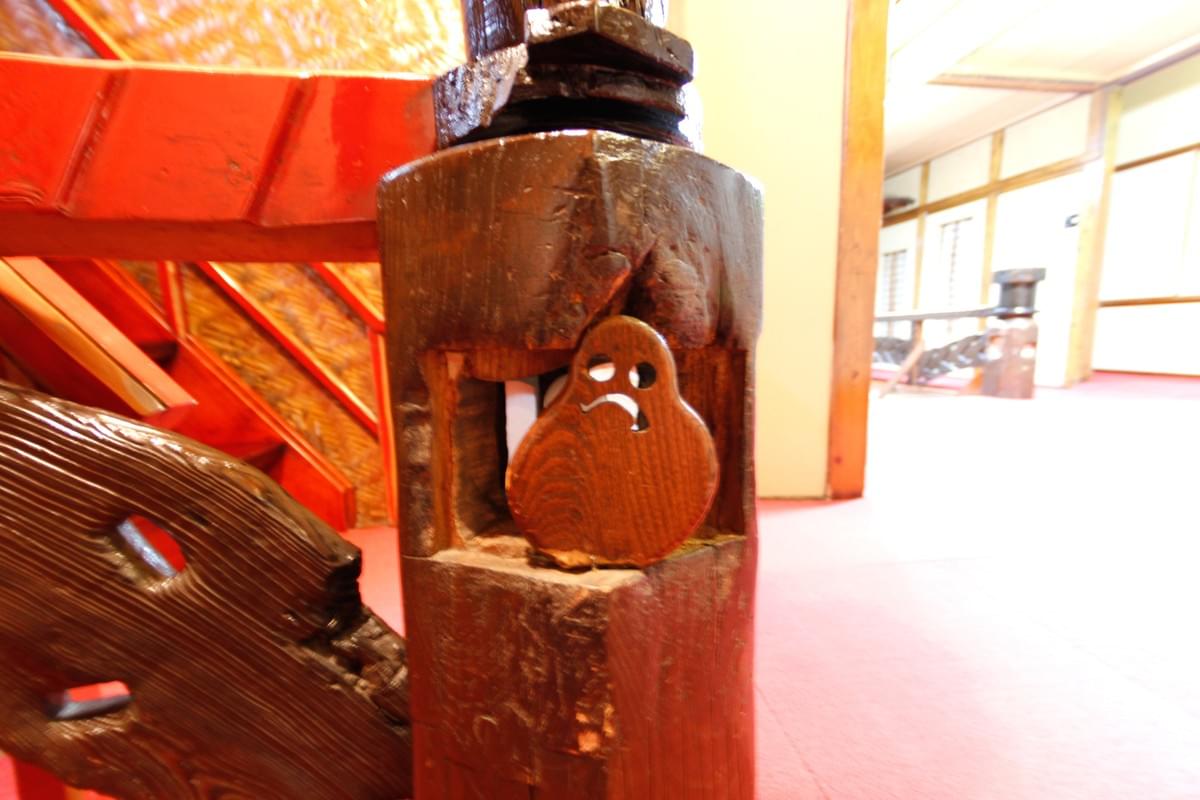
Putting the focus back on the inside of the ryotei, guests will find a plethora of decorations – drawings, figures and designs integrated into the ryotei itself – hidden in more or less plain sight. Most prominently features is the Daruma, a lucky charm in the likeness of a Buddhist priest who prayed so hard and so long that his extremities fell off. Daruma dolls, however many times they are pushed over, will always come bouncing back up. One of them greets visitors right by the entrance from atop the roof and they are also printed on the ryotei’s business card. One might wonder how many there are in total.

